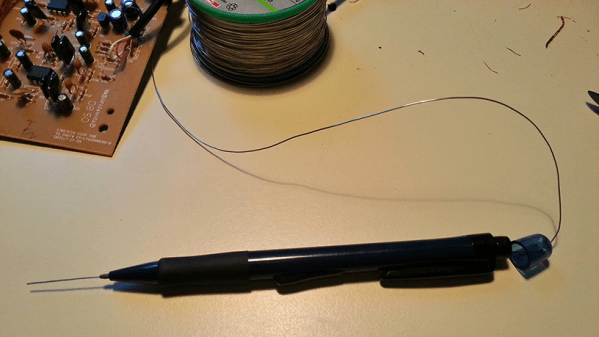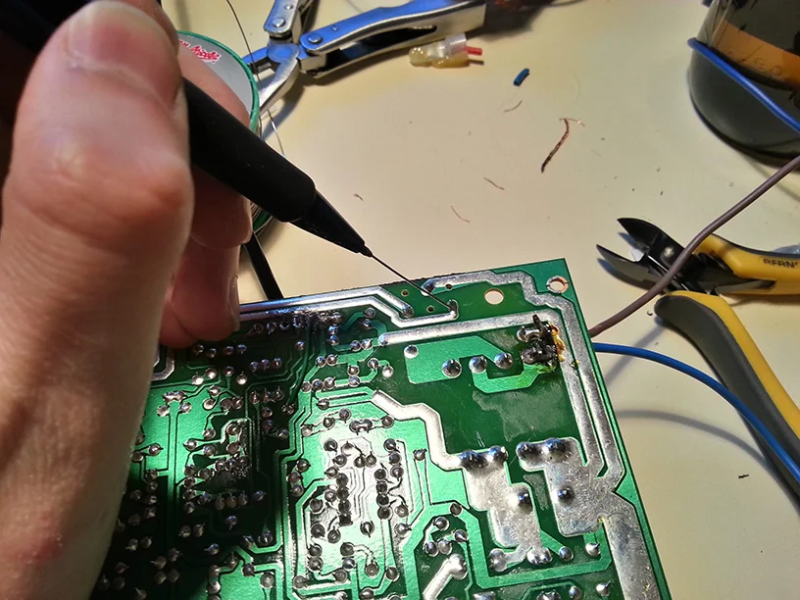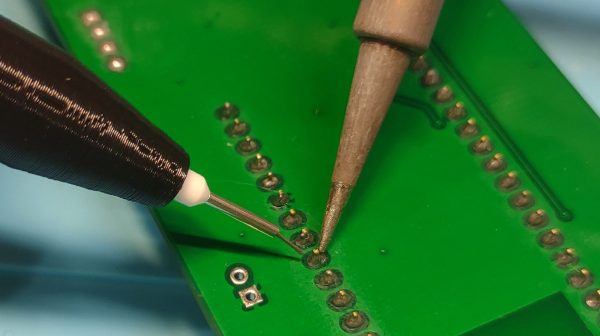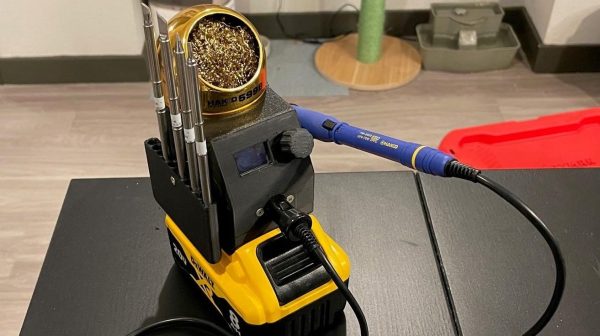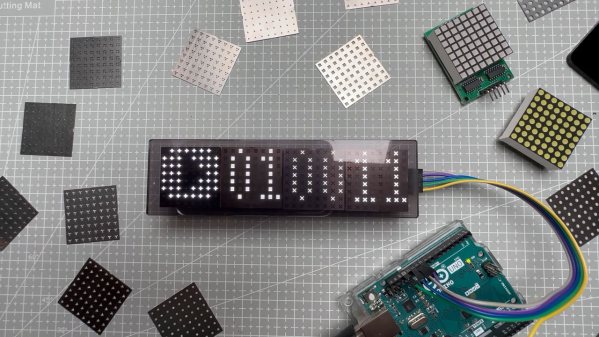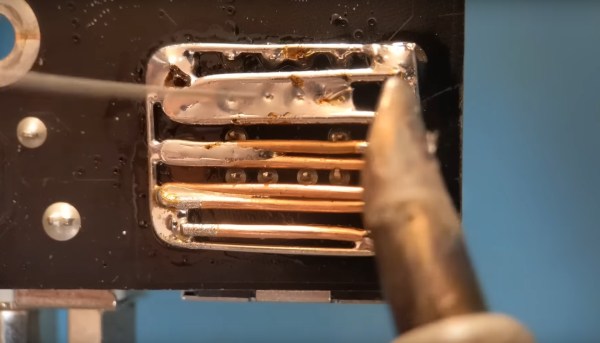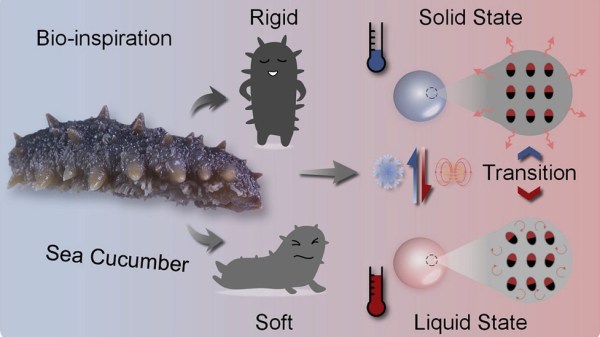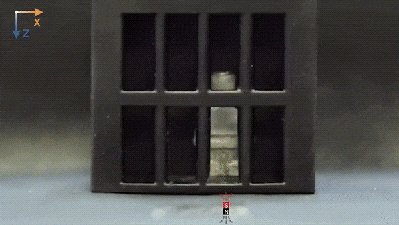Want a better way to feed solder, but want to do it on the quick and cheap? Well [ptkrf] has a solution for you in an old instructables post we stumbled upon recently. You might have, or can inexpensively buy, a mechanical pencil which has the feeder button on the side rather than on top, as usual. With the pencil in hand, [ptkrf] shows you the simple procedure for modifying the pencil into a solder feeder. You might need to experiment with different size pencils and solders to get a perfect match. Common mechanical pencils come in sizes to accommodate 0.5, 0.7, and 0.9 mm leads, but there are bigger and smaller ones available. Perhaps one of those really large drafting lead holders could be repurposed as a solder dispenser for the bigger jobs.
We discussed a 3D printed solder feeder a few days ago, but if you don’t have one, this may be a good way to go. Thanks to [iliis] for sending in this tip.

